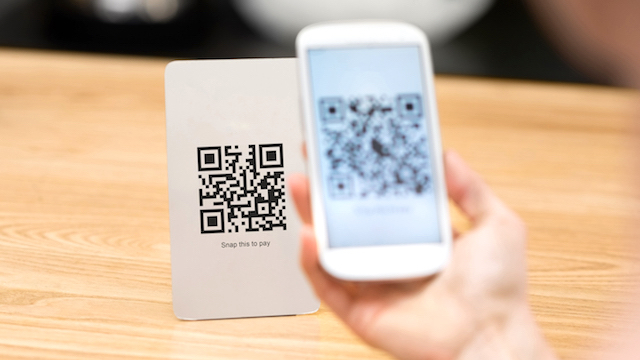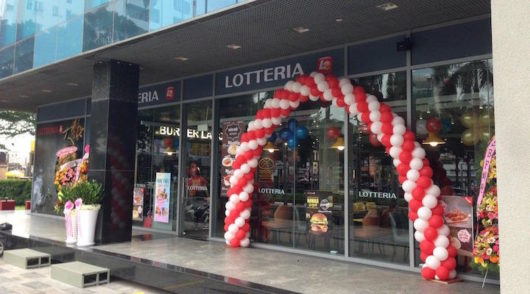Until recently, accepting cashless payments from customers was a convenience only large-scale retailers could offer.
That’s because the technology solutions and terminals were an expensive investment for small and medium-sized stores – not to mention the hefty transaction fees.
“With high costs to maintain operations from rent, manpower and inventory, small- to medium-sized merchants have become reluctant to engage payment service providers to embrace cashless payments,” explains Michelle Chan, VP, marketing & strategic partnership with HKT Payment Limited, a player in the mobile payments market in Hong Kong.
“Mobile payments have now emerged as an economical and swift option for SMEs to add to their payments options where set-up and merchant costs are extremely low. Some payment setups, like our Go QR payment service, only require a paper QR code sign and transactions for customers take as little as one or two seconds to complete.”
There are clear signs in Hong Kong that consumers are moving away from cash payments, a trend that began with the successful expansion of the Octopus card, launched in 1997, from a transport fare-payment method to broader retail acceptance. But the market still has a long way to grow, with Hong Kong lagging the mainland in adoption rates.
Hong Kong’s secretary for commerce and economic development. Edward Yau Tang-wah, believes the reason for this is because the Octopus card was so successful people stopped exploring more options.
“You can say that we are the victim of our own success, having the Octopus so well developed, and therefore we’ll not be able to pick up the latest technology,” he said in an interview with the South China Morning Post newspaper.
The Hong Kong government is the majority shareholder in the MTR network which, in turn, is the majority owner of the Octopus card system.
But the Octopus card has now developed its own answer that uses QR codes for payments as well.
Chan believes QR codes are one of the keys to the adoption of new cashless payment systems, given Hong Kong has the highest mobile device penetration globally, as well as being in such close proximity to Mainland China, where mobile payments have leapfrogged traditional card technology as a cash alternative.
“Hong Kong has the environment suitable for mobile payments to take off, with the right amount of push and incentives from industry players,” she told Inside Retail Hong Kong magazine. “In the future, payments can essentially be completed entirely on a smartphone, whether online or offline.”
A QR payment facility works in physical stores and online. Its market credibility is underscored by its adoption by the 7-Eleven convenience store network across Hong Kong, along with the online ticketing platform ticketflap.com and a mixture of other online and offline retailers.
One independent retailer to adapt QR based payments is local fashion store Overlab. Founder Frankie Po says the convenience of the mobile payment system aligns with the needs of his target demographic – customers from the youth segment, who always have a mobile phone in hand.
Another early adopter, Sabrina Yang, COO of meal delivery service Nosh, says having an additional QR-based payment option allows them to reach new customers who prefer not to pay cash.
A simple scan
A QR-based payment service is simple for shoppers to use. Each member merchant is allocated a unique QR code and shoppers simply turn on the app on their phone and scan the merchant code, before inputting the transaction amount and confirming the payment. Payment transaction details are shown simultaneously to the customer and the merchant to review through the online payment administration portal.
Users of mobile wallets are assigned a unique QR code for payment, which will be automatically refreshed every 30 seconds to ensure security.
“With cash payments, merchants need to invest time to handle cash from transactions accumulated during the day, taking away from time, as well as peace of mind to run their businesses,” explains Chan.
“But Go QR gives merchants the peace of mind to concentrate on the operations and development of their business, as well as benefit end-customers, who don’t have to carry cash with them.”
The Go QR service includes a dedicated merchant hotline to meet different merchants’ needs, offering bother retailers and shoppers peace of mind.
“As a leading licensed mobile payment service provider in Hong Kong, we have been supporting start-ups and small merchants who share the same vision in driving for a cashless city,” says Chan.
“We are confident that the introduction of Go QR will encourage more start-ups and small merchants to go for cashless transactions given the low capital entry requirement. The service will improve their operational efficiency as they no longer need to handle what could be a large amount of cash notes and coins they receive every day. Patrons of these shops will also have an additional and secure means of payment.”
Hong Kong’s digital payment market
- The total transaction value (TTV) of Digital Payments is expected to reach US$13.849 billion this year (Source: Statasia).
- Over the next four years, the TTV is expected to show a cumulative annual growth rate (CAGR) of 16 per cent, resulting in a total spend of US$25.081 billion in 2021.
- Digital commerce is currently the largest category within TTV, accounting for US$10.563 billion this year.
- China is the world’s largest digital payments market, tipped to achieve a TTV of US$786.119 billion this year.
- Mobile wallets like Tap & Go are regulated by the HKMA under the Stored Value Facilities (SVF) license system. There are currently 16 license holders in Hong Kong, including HKT Payment. (Source: HKMA).
* This feature originally appeared in Inside Retail Hong Kong’s magazine edition. Subscribe to the print or digital edition here.








